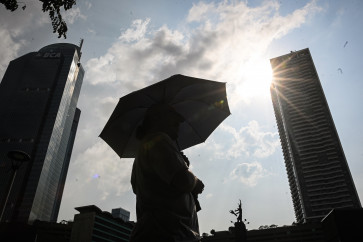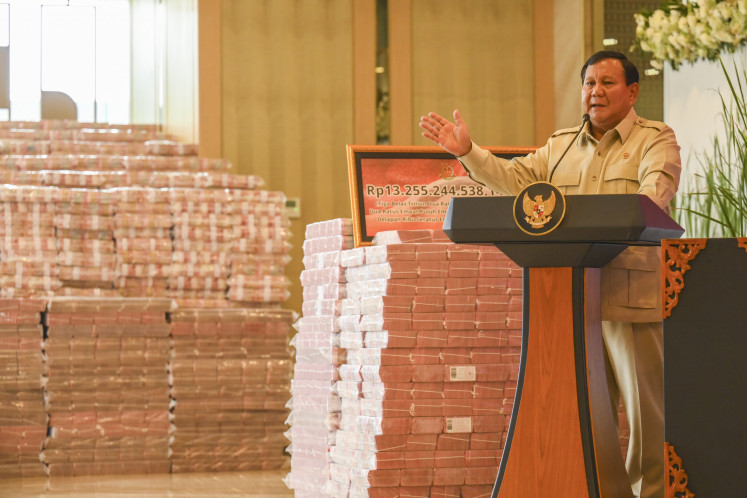Popular Reads
Top Results
Can't find what you're looking for?
View all search resultsPopular Reads
Top Results
Can't find what you're looking for?
View all search resultsContractors suffer as prices plunge further
With global oil prices continuing their plunge â falling below US$30 on Wednesday â, small and locally owned oil and gas companies are at great risk of closure or âbleedingâ operations, according to the Upstream Oil and Gas Regulatory Special Task Force (SKKMigas)
Change text size
Gift Premium Articles
to Anyone
W
ith global oil prices continuing their plunge ' falling below US$30 on Wednesday ', small and locally owned oil and gas companies are at great risk of closure or 'bleeding' operations, according to the Upstream Oil and Gas Regulatory Special Task Force (SKKMigas).
'There is a field that has closed, namely Tonga. There are many others, mostly small local firms, that are seriously struggling, such as Tiarabumi Petroleum in South Sumatra,' said SKKMigas spokesperson Elan Biantoro, referring to Jakarta-listed Energi Mega Persada's Tonga PSC oil block and Tiarabumi Petroleum's West Air Komering PSC.
In Indonesia, the average cost per barrel is $22, according to figures from SKKMigas. However, there are numerous fields recording higher costs, particularly those located in remote areas with poor infrastructure and offshore operations.
US oil stumbled below $30 per barrel on Wednesday, compared with over $100 in mid-2014, on global glut and concerns over weakening demand from slowing-down China, making it a lot more difficult for companies across the world to operate at a profit.
The oil price plunge has forced global giants to slash jobs and cut spending plans; on Wednesday, BP Plc cut an additional 5,000 jobs, Petroleo Brasileiro SA slashed its spending plans and Petrolian Nasional Bhd. warned it faced several tough years ahead.
In Indonesia, the Tonga oil block mentioned by SKKMigas bears production costs of $40 per barrel, largely because of high transportation costs under a tracking system, according to Elan.
Figures from the company showed that Tonga PSC's net production was at 19 barrels of oil per day (bopd) as of the end of the first nine months of last year.
Other small and local firms are currently suffering, including Sumatera Persada Energi (SPE), which operates the West Kampar PSC.
'They are trying to survive, but they're currently bleeding,' said SKKMigas deputy for operation Muliawan.
Some international companies are also struggling amid current plunges in the world benchmark.
'They include ConocoPhillips' operation in Natuna [South Natuna B], where the offshore and remote location leads to high costs. Production is actually still good and therefore, they intend to farm out some shares. Chevron is currently also concerned with its operation in Kalimantan because it is offshore,' Elan said.
He was referring to a recent report that South Natuna B's contractors ' namely ConocoPhillips with 40 percent ownership, Chevron with 25 percent and Inpex with 35 percent ' were seeking to release part of their stakes to new partners.
ConocoPhillips' and Chevron's representatives in Indonesia declined to comment. Chevron's operation in East Kalimantan covers three main areas, namely North Area, South Area and West Seno.
Business players and global analysts have predicted that the oil price is unlikely to rebound any time soon because the global surfeit is expected to continue rising. Meanwhile, major producers are maintaining oil production, as any reduction will hit their market shares.
Goldman Sachs earlier estimated that the oil price would touch as low as $20 per barrel. The International Monetary Fund (IMF) said that the commodity price could reach $5 to $15 per barrel, driven by the lifting of international embargoes against Iran, which is also a significant oil producer in terms of volume.
The current low oil price is not unprecedented, having dropped to $5 per barrel prior to the 1973 oil crisis. However, the sharp drop of over 60 percent since mid-2014 remains a source of major concern, especially for producers.










